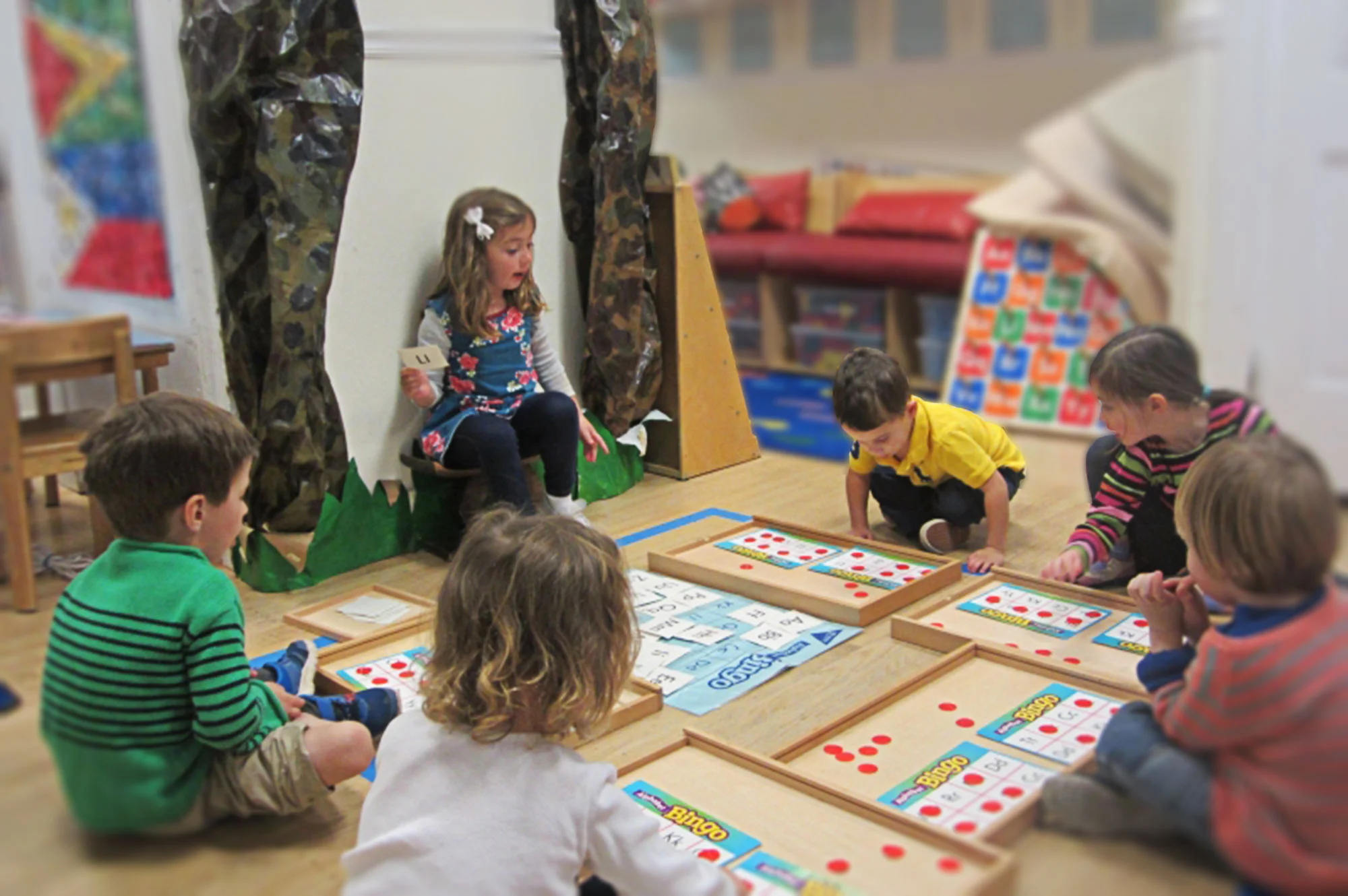Curriculum FAQs
Who are Lev Vygotsky and Jean Piaget?
Two theoretical approaches that most influence Early Childhood Education are from Lev Vygotsky (1896-1934) and Jean Piaget (1896-1980). Russian Hill School curricular approaches have been developed in support of Vygotsky. The following articles are informative for comparing the two theories as well as helpful for interpreting the academic and social benefits of the 'mixed-age' classroom model in respect to learning during the pre-kindergarten years.
Simply Psychology - Lev Vygotsky
Learning - Social Development Theory (Vygotsky)
What do you mean by “zone of learning”?
The zone of proximal development (ZPD) was developed and defined by Vygotsky as "the distance between the actual developmental level as determined by independent problem solving and the level of potential development as determined through problem solving under adult guidance, or in collaboration with more capable peers". Lev Vygotsky viewed interaction with peers as an effective way of developing skills and strategies. His work suggests that teachers use cooperative learning exercises where less experienced children develop with help from more skillful peers - within the zone of proximal development. Vygotsky believed that when a student is at the ZPD for a particular task, providing the appropriate assistance will give the student enough of a "boost" to achieve the task.
What is “scaffolding”?
In education, scaffolding refers to a variety of instructional techniques used to move students progressively toward stronger understanding and, ultimately, greater independence in the learning process (Berk & Winsler, 1995). The term itself offers the relevant descriptive metaphor: teachers provide successive levels of temporary support that help students reach higher levels of comprehension and skill acquisition that they would not be able to achieve without assistance. Like physical scaffolding, the supportive strategies are incrementally removed when they are no longer needed, and the teacher gradually shifts more responsibility over the learning process to the student.
Berk, L. E., Winsler, A., & National Association for the Education of Young Children, W. D. C. (1995). Scaffolding children's learning: Vygotsky and early childhood education. NAEYC Research into Practice Series. Volume 7.
What is a “Blended Curriculum” Model?
The Blended Curriculum model selects and includes features from a variety of early childhood education approaches wherever complementary. Our program combines primarily mixed-age and open classroom models while incorporating selected effective practices from Montessori and Orff Schuelwerk (music and dance) methodologies. Our curriculum at RHS is designed for holistic development through unit study and arts-integrated academic approaches.
What are some of the benefits of a 'mixed-age' classroom in a Pre-Kindergarten program?
Children look to their peers to learn and help negotiate new experiences. The intention of a mixed-age classroom is to increase the heterogeneity of the group so as to capitalize on the differences in the experience, knowledge, and abilities of the children. In this way, children learn from each other from many different perspectives and viewpoints. Whereas single-age classrooms create pressure on children and teachers to expect the same knowledge and skills from all children, in groups of children with a wide age span, the range of acceptable behavior and performance is wider. Results of experiments in which children worked in same-age or mixed-age groups of three have shown that in the latter, older children spontaneously facilitated other children's behavior. Mixed-age groups also provide social and intellectual benefits (Gray, 2011). In mixed-age groups, younger children are capable of contributing to far more complex activities than they would be if they were working by themselves (Doherty, 2012).
Gray, P. (2011). The special value of children's age-mixed play. American Journal of Play, 3(4), 500-522.
Doherty, A. (2012). "Teacher, i showed her how to do that!": Teaching early-years children through mixed-age play.
Primary Science (122), 24-26.
How does RHS transition children to Kindergarten?
Our individualized mixed-age classroom is designed specifically to address children's specific zone of learning needs. Given that children's skills are varied in comparison to one another (not age-based), the mixed-age environment can provide kindergarten-bound students continuity for honing strong, balanced skills more effectively when compared to same-age one-year programs. Individual and group approaches designed for solidifying academic readiness and social skills, (leadership, empathy) which, in turn, scaffolds for the individual child's development of high self-esteem, are hallmarks of the program at RHS. In their final year at RHS, kindergarten-bound students step up as leaders of their class, empowered through a variety of social and individualized programs tailored to their explicit older child needs.

